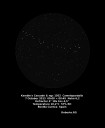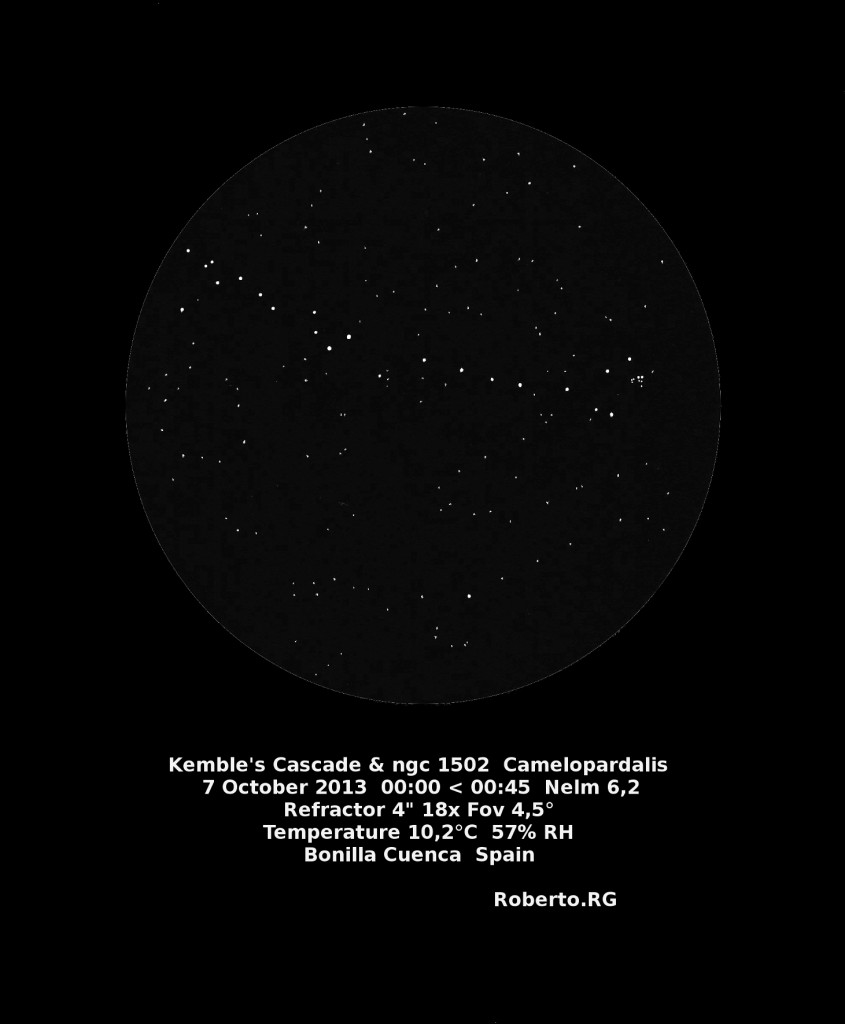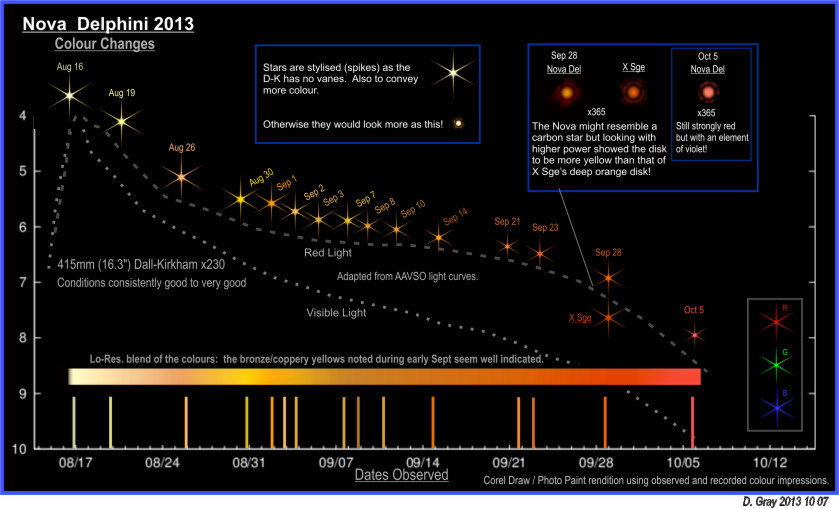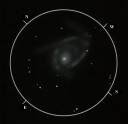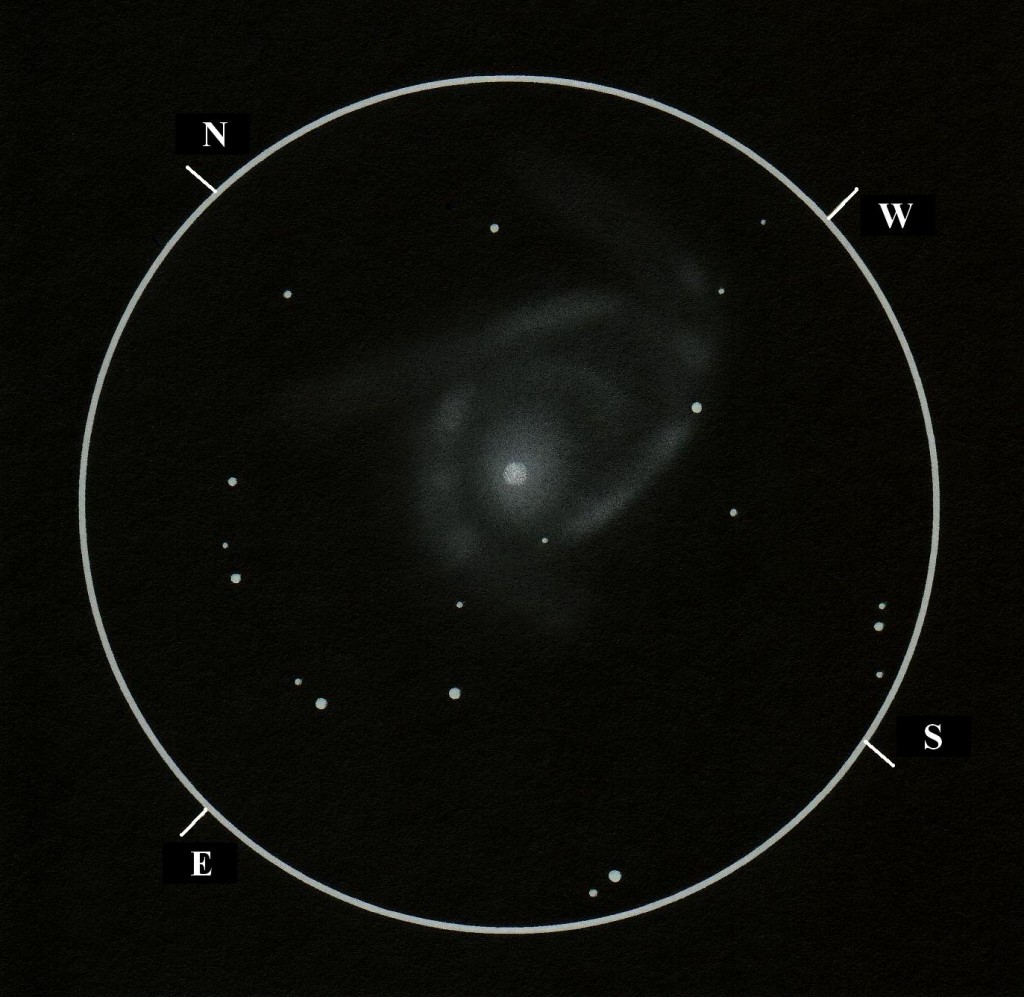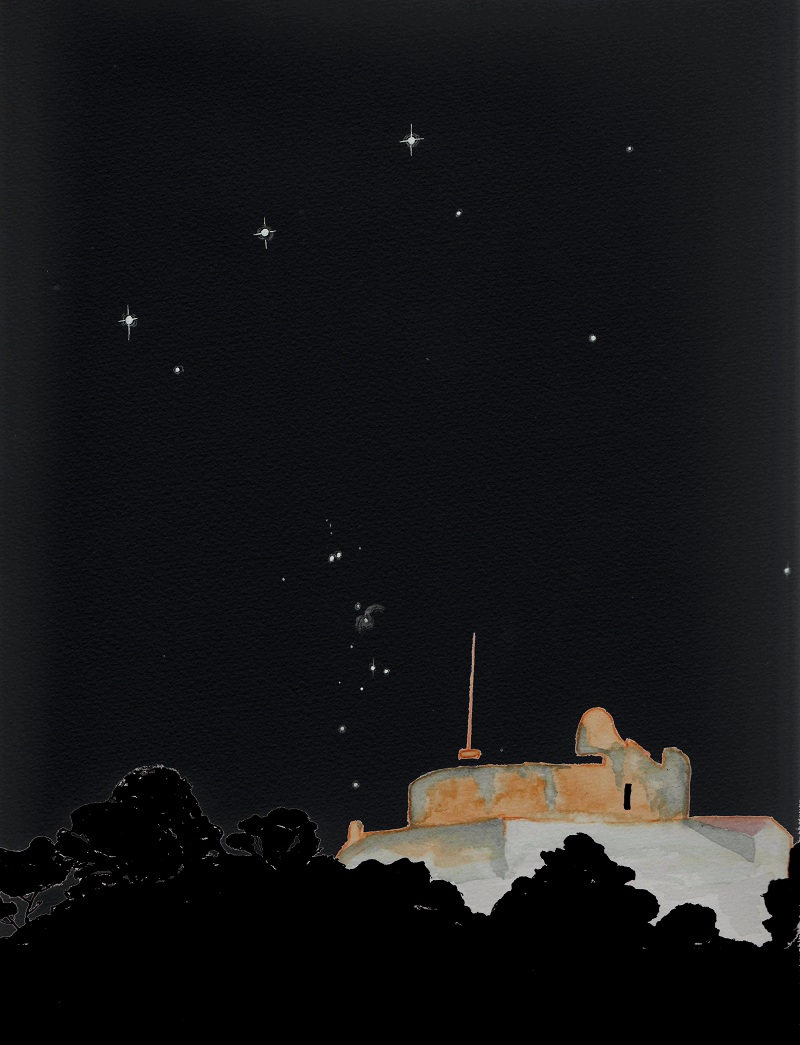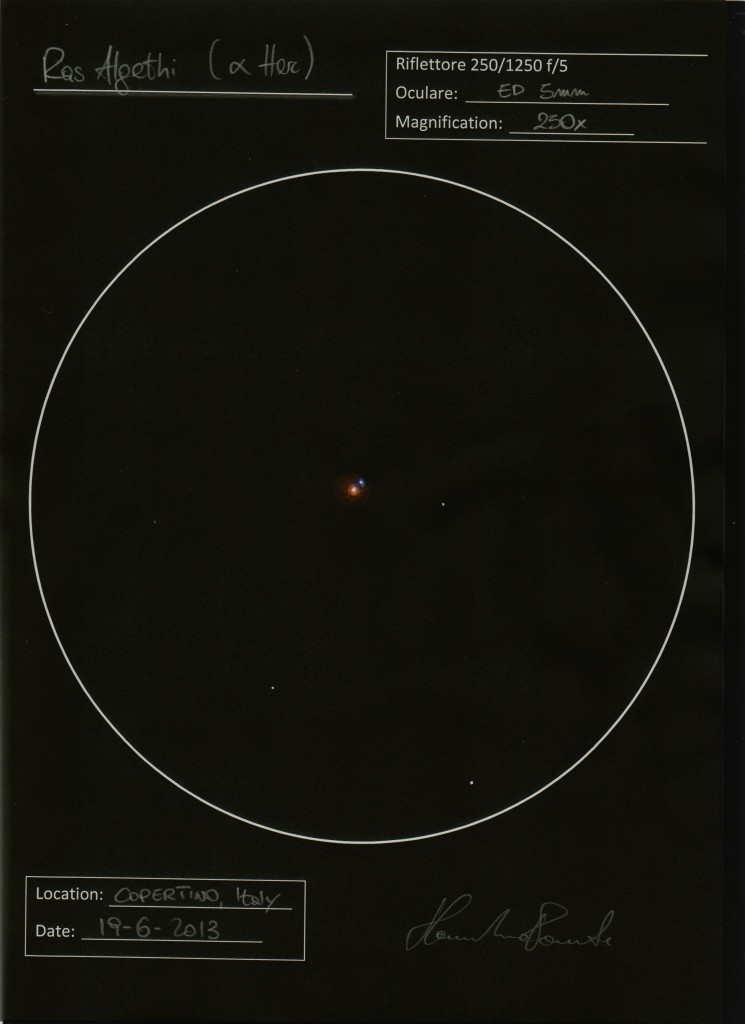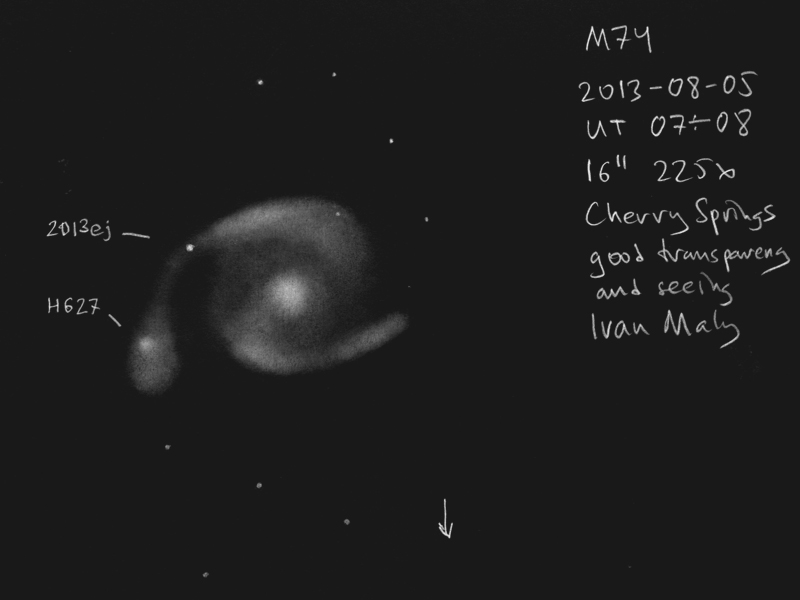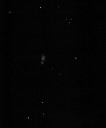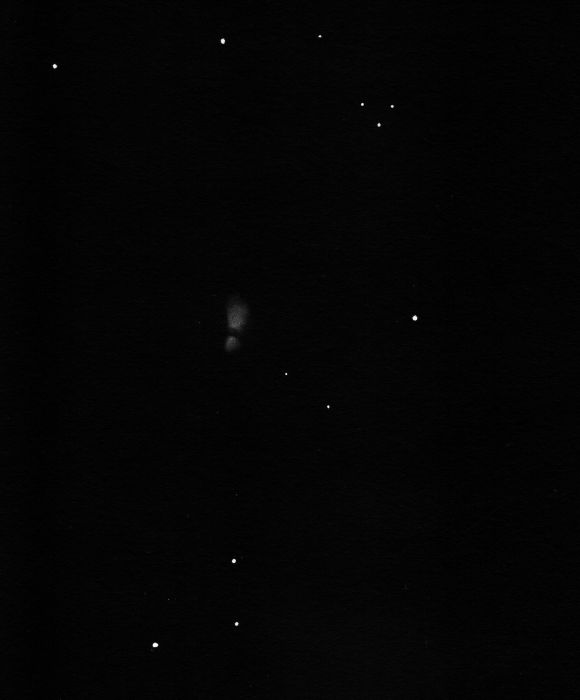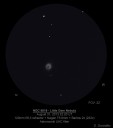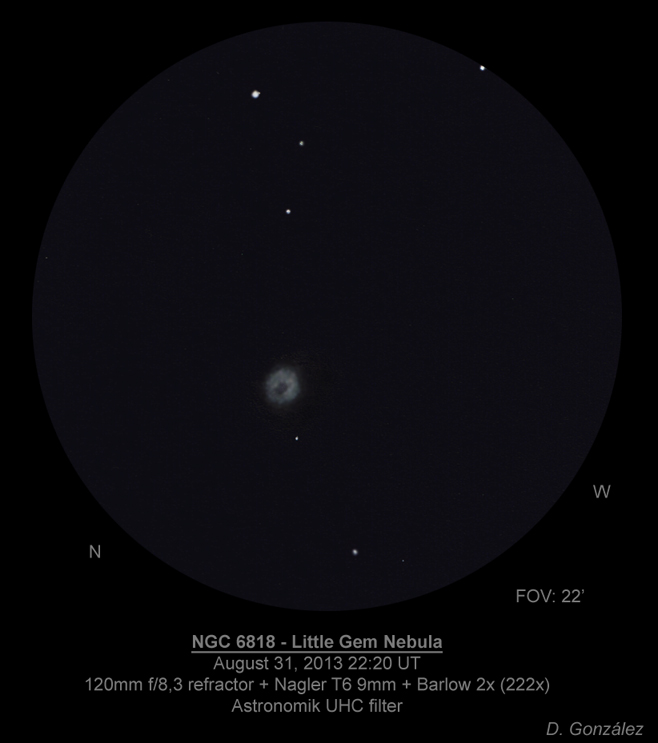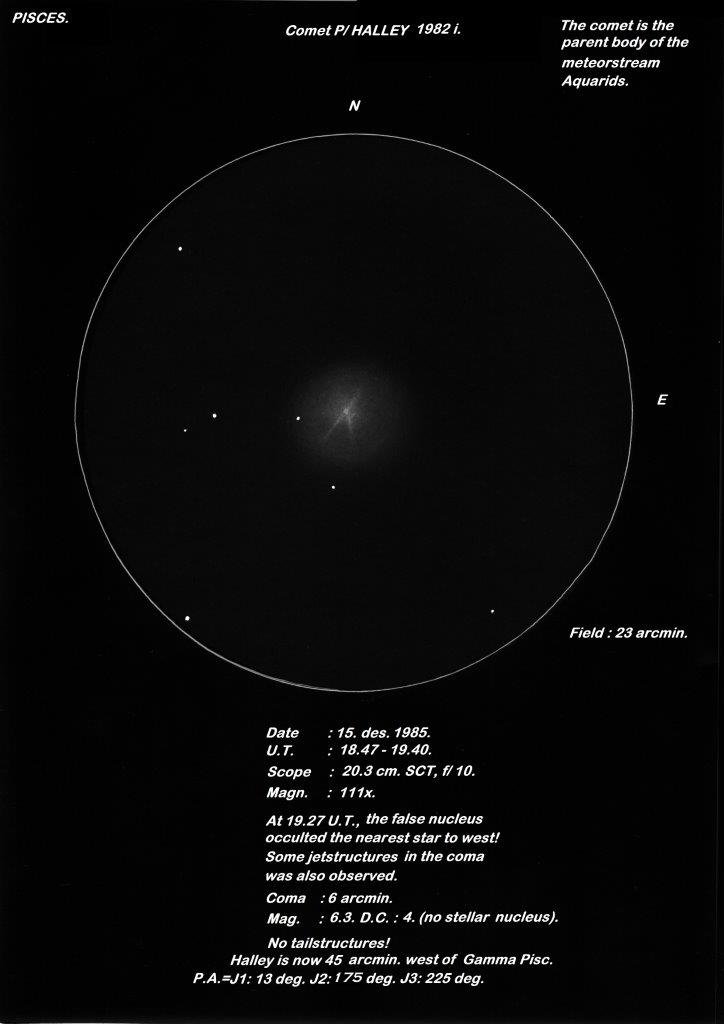
Hey ASOD- friends!
This is a sketch of the famous comet P/ Halley.
The comet showed some structures in the circular coma (jets), and
it was interesting to see an occultation of the nearby star to west by
the centralcondensation later!
In january 1986, comet Halley got a 2 deg. long tail and was a
fine object in binos and telescopes from Norway.
I found Halley early (8. oct.- 85), and followed it carefully all the way
on northern sky and from Tenerife in apr. – 86.
At this time I was leader of the comet- section in Norway.
The sketch was made with graphite (pencil) on white paper (inverted).
Location : Trondheim, Norway. Info on my sketch!
Best wishes from : Per-Jonny Bremseth.

